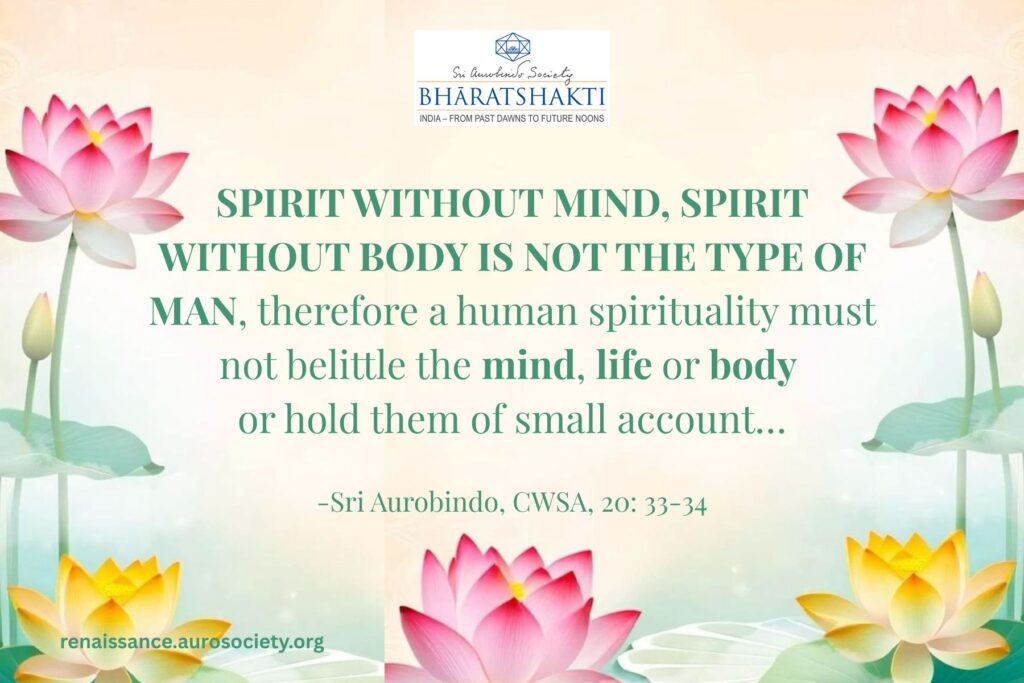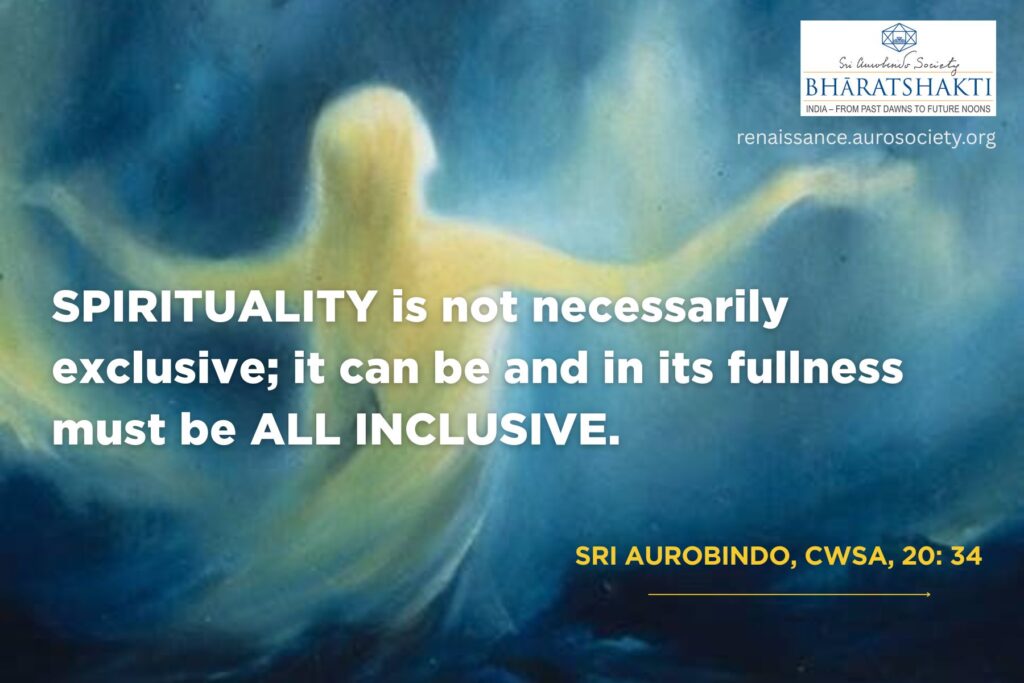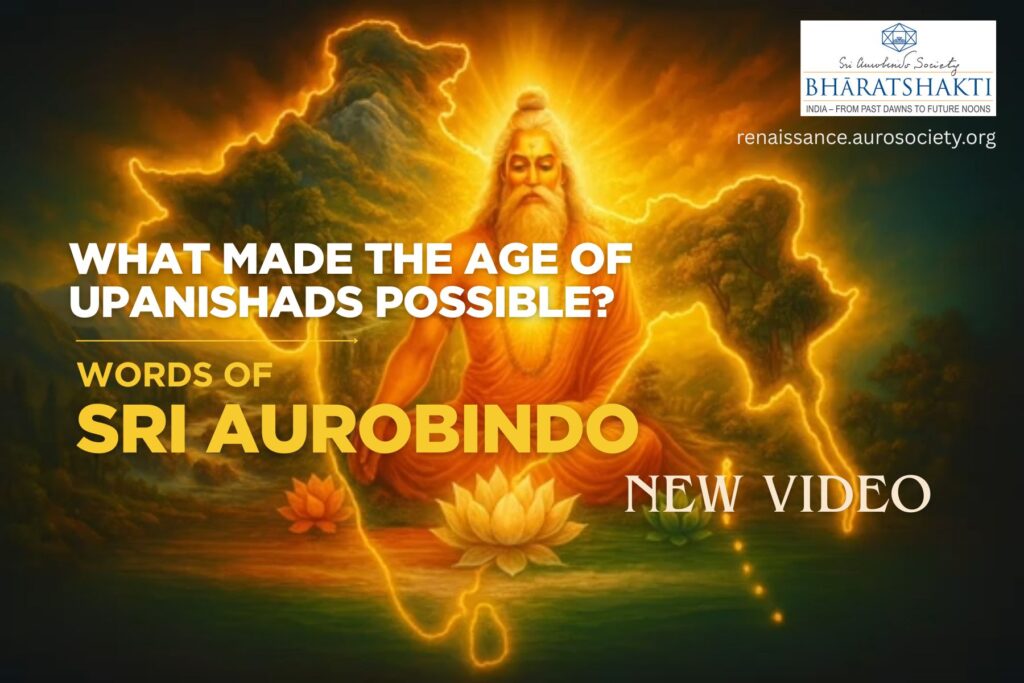Volume V, Issue 10
Author: Beloo Mehra
Continued from Part 1: From Dance to Drama
Editor’s note: This part highlights the legend behind the sacred origin of Nātya or drama in Indian cultural tradition. The focus of drama in India was almost always along the lines of the Indian view of life. This view emphasised continuity and renewal of life, cyclical nature of life, as well as the human urge to create an ideal life.

A long span of time and practice is needed for any art form or human activity to formulate and organise its principles, processes and rules. It is generally accepted that the Nātyashāstra as we know today, a text of about 6000 verses spread over 36 chapters, was based on an earlier larger text of about 12000 verses. The text has frequent references to the works of earlier writers. To have an encyclopedic text such as Nātyashāstra, the Indian theatre must have begun long, long before.
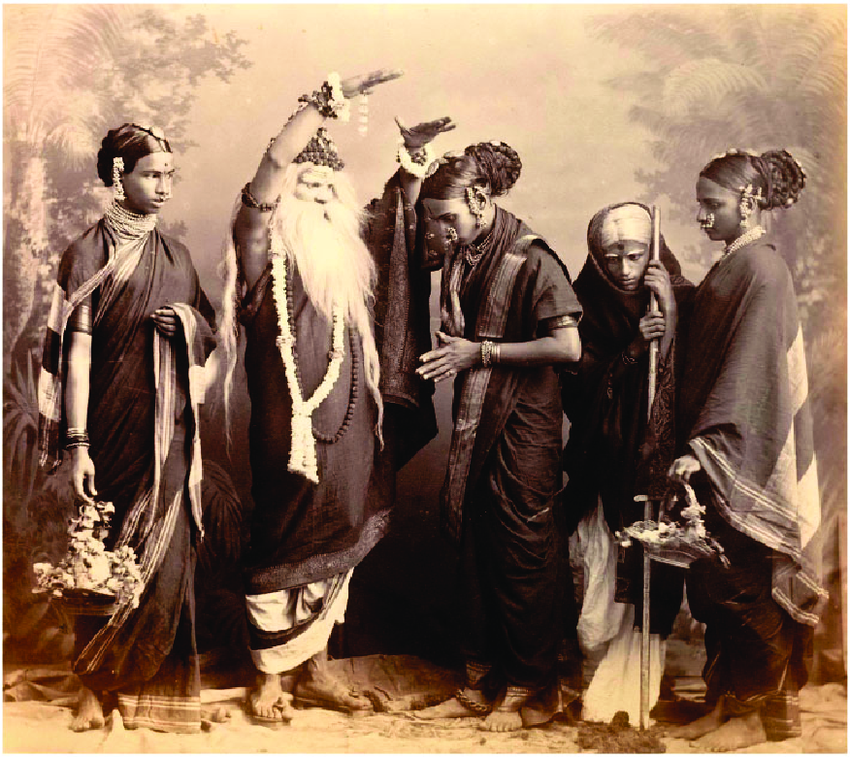
Pic: Shakuntala joins her hands before Kanva, who blesses her union with Dushyanta. Her friends are shown with flower baskets, much as they appear in the first act of the play. From the original Kirloskar production, early 1880s. Source: Mujumdar’s Annasaheb Kirloskar Yanche Caritra (1904). Source
The Sacred Origin of Nātya
The sacred origin of Drama or Nātya in India takes us back to the times when the Kṛtayuga had just come to an end and Tretāyuga had begun. People on earth had become addicted to sensual pleasures. They were under the sway of base sentiments such as excessive desire, greed, jealousy, and anger. And they found their state of happiness mixed with sorrow.
So the devas with the great Indra as their leader, approached Brahmā, the Lord of Creation. And they spoke to him, “We want an object diversion, which must be audible as well as visible” (क्रीडनीयकमिच्छामो दृश्यं श्रव्यं च यद्भवेत्). They requested Brahma to create another Veda which will belong equally to all the people and can bring respite to all.
“Let it be so,” said Brahma. And then through his Yoga (concentration), he recalled the four Vedas and thought that he would make a fifth Veda. This would be Nāṭyaveda with itihāsa and purushartha-s as its basis. Nāṭya would be a conducive means to bring people’s attention to dharma, the foundation of a good life. It would contain good counsel and give guidance to people in all their actions. It would be also a review of all arts and crafts.
With this resolve, Brahmā then shaped this Nāṭyaveda.
He took the recitation or spoken word (pāṭhya) from the Ṛg Veda, the song from the Sāma Veda, the histrionic representation (abhinaya) from Yajur Veda, and the understanding of the relation between mind and body-expressions (Sattvika – for conveying various bhāva-s through expressions exuding grace and charm) from Atharva Veda. Thus was created the Nāṭyaveda connected with the Vedas.
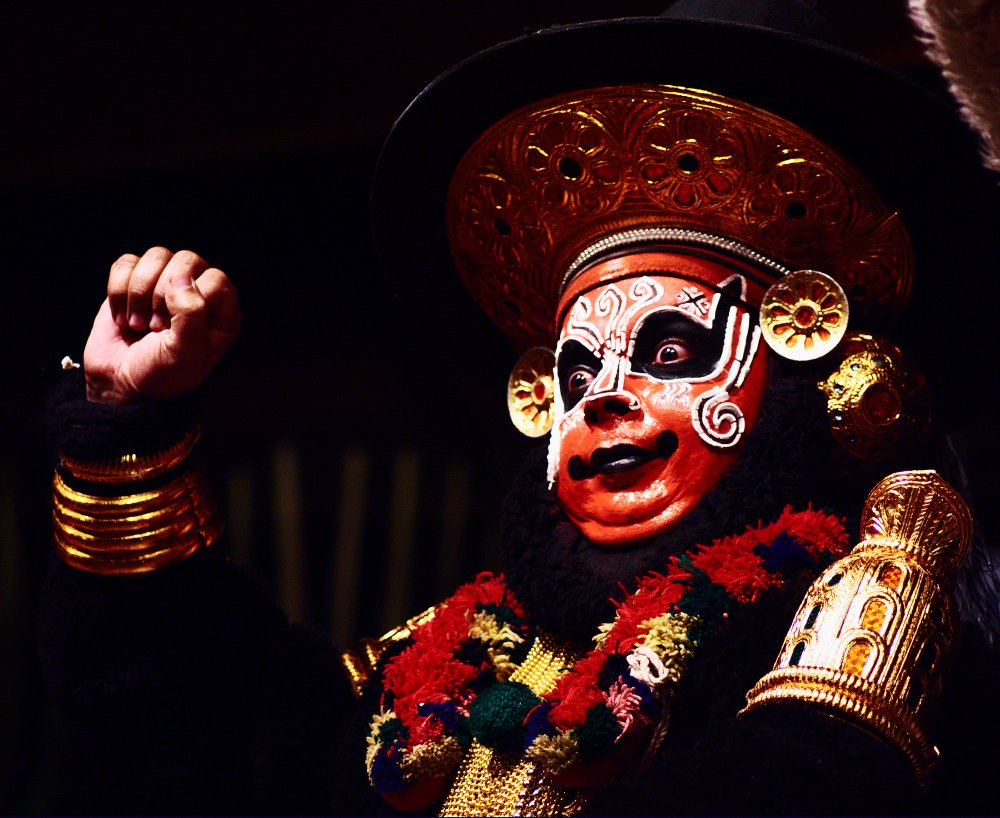
The Fifth Veda
Brahmā then told Indra that he should now pass on this Nāṭyaveda to the gods who are skillful, learned, bold in speech and inured to hard work. Listening to this, Indra bowed to him with folded palms. And said in reply, “O Lord, gods are neither able to receive it and to maintain it, nor are they fit to understand it and to make use of it. They are unfit to do anything with the drama. But the sages who know the mystery of the Vedas and have fulfilled their vows, are capable of maintaining this Nāṭyaveda and putting it into practice.”
Brahmā then tells Bharata Muni, “O Bharata, you with your one hundred sons will have to put the Nāṭyaveda to use”. And this is how Bharata learnt the Nāṭyaveda from Brahmā himself. And he then taught his sons this great knowledge and its proper application.
Nātyashāstra describes itself as Nātyaveda, the fifth Veda accessible to all the four varnas. The text is permeated with Vedic symbolism and imagery. The theatrical production is compared to Vedic yajna, with the stage being the vedika, the altar. The dramatic spectacle, just as the yajna, is said to have a moral and ethical purpose. Bharata says:
“He who hears the reading of this Shāstra, which is auspicious, sportful, originating from the mouth of Brahman, holy, pure good, destructive of sins, and he who puts in to practice and witnesses carefully the performance of drama will attain the same blessed goal which masters of Vedic knowledge and performers of yajna attain.”
The text reveres and worships Vedic gods such as Indra, Varuna and Vayu. It consistently projects the Vedic worldview of the one formless or un-formed (arupa) evolving in to multiple forms (rupa pratirupa) and then on to the form beyond (pararupa).
The Object of Drama
Theatre in India started as a narrative form, with reciting, singing and dancing as its integral elements. This emphasis on narrative elements made Indian drama essentially theatrical right from its early days. The focus of drama in India was almost always along the lines of the Indian view of life. This view emphasised continuity and renewal of life, cyclical nature of life, as well as the human urge to create an ideal life.
Theatre had a sacred significance in ancient India. Prayers and rituals were conducted and the stage was consecrated before the commencement of the play. The object of the drama was to show men and women the proper way to live, so that one could thrive and also strive to become a better person. In the first chapter of the Nātyashāstra, we find a comprehensive description of the purpose of drama.
The drama is a representation of all the States of the three worlds (bhāvānukīrtana) — of gods, demons and humans. It makes references to varied situations involving duty, money, peace, fights, laughter, games, sorrow, love-making and even killing of people. Neither gods nor demons nor humans are depicted as always good or always evil. It represents the nature of society as it exists through actions, emotions and conduct of people in different situations.
Therefore, drama is capable to play an instructive role for all.
It can teach duty to those who go against duty. It can speak of love as well as chastise those who are ill-bred or unruly. Drama promotes self-restraint in those who are disciplined. It gives courage to cowards, energy to heroic persons, enlightens men of poor intellect and gives wisdom to the learned. It is supposed to bring amusement and diversion. But it can also give firmness of mind to persons afflicted with sorrow and composure to persons agitated in mind.
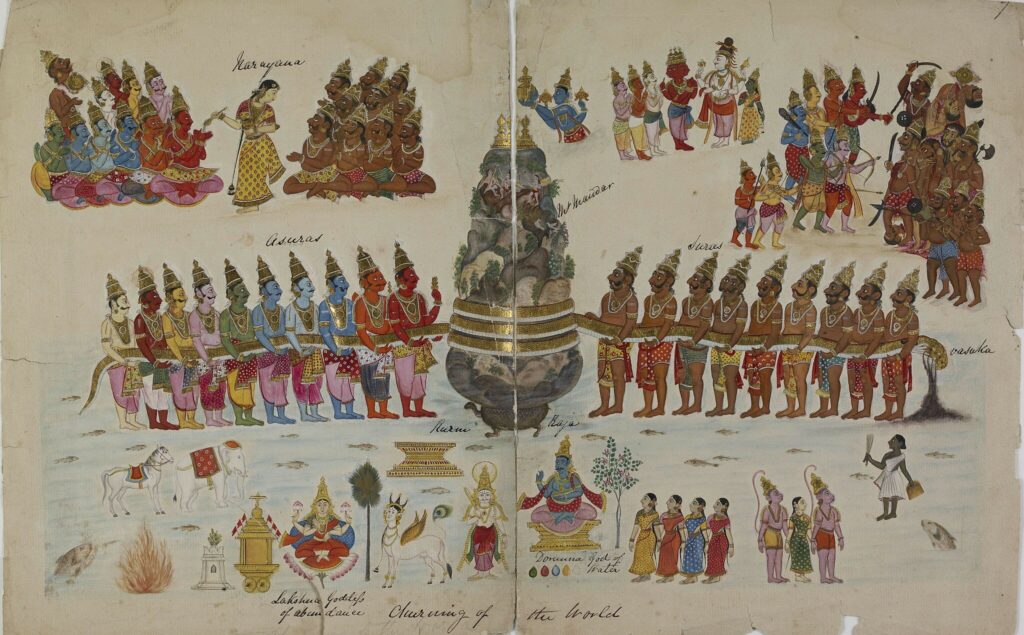
According to Bharata, drama is a reflection or a representation of the actions of men of various natures. It strives to depict the infinite variety of human characters. That is why a student of theatre should study the various human habits and natures. For this, the world, the society we live in is the most authoritative source of knowledge.
At the same time, theatre was always understood as an imaginative and symbolic art. It incorporated poetry, music, stylised movements, and special costumes and make up (not what is commonly seen on the city-streets). And because drama was also meant to educate and enlighten the audiences, it also presented an idealistic vision of life as it should be.
We get a glimpse of this idealistic vision when we look at the qualities of an ideal hero. According to the Nātyashāstra, these qualities include: being polite, loving, generous, diligent, pure, firm-minded, good conversationalist, youthful, intelligent, enthusiastic, brave, self-respecting, learned, and religious-minded. These are qualities that set a high standard toward which human beings must aspire. Thus, here again we find a life-affirming spiritual basis for the theatrical arts in India.
Sri Aurobindo on Hindu Drama
Sri Aurobindo wrote that the Hindu drama was written by men of accomplished culture, who also had an understanding of an elaborate and well-understood system of poetics. Describing the vital law governing Hindu poetics, he says that it does not seek to represent life and character primarily or for their own sake. Rather, its aim is fundamentally aesthetic.
A dramatic art based on such a principle would seek to awaken the aesthetic sense of the onlooker through a delicate and harmonious rendering of passion. And it would gratify it by moving or subtly observed pictures of human feeling. It would not attempt to seize a man’s spirit by the hair and drag it out into a storm of horror, pity and fear and return it to him drenched, beaten and shuddering, says Sri Aurobindo.

Sri Aurobindo elaborates further and says that to a Hindu mind it would have seemed savage and inhuman to take any aesthetic pleasure in the sufferings of a character such as Oedipus or in the tragedy of a Macbeth or an Othello. He also explains the reason for this, which has to do with both the temperament as well as the Indian or Hindu vision of the purpose of art.
“Partly this arose from the divine tenderness of the Hindu nature, always noble, forbearing & gentle and at that time saturated with the sweet & gracious pity & purity which flowed from the soul of Buddha; but it was also a necessary result of the principle that aesthetic & intellectual pleasure is the first object of all poetic art.
“Certainly poetry was regarded as a force for elevation as well as for charm, but as it reaches these objects through aesthetic beauty, aesthetic gratification must be the whole basis of dramatic composition; all other objects are superstructural. The Hindu mind therefore shrank not only from violence, horror & physical tragedy, the Elizabethan stock-in trade, but even from the tragic moral problems which attracted the Greek mind; still less could it have consented to occupy itself with the problems of disease, neurosis and spiritual medicology generally which are the staple of modern drama and fiction.
“An atmosphere of romantic beauty, a high urbanity and a gracious equipoise of the feelings, a perpetual confidence in the sunshine & the flowers, are the essential spirit of a Hindu play; pity and terror are used to awaken the feelings, but not to lacerate them, and the drama must close on the note of joy and peace; the clouds are only admitted to make more beautiful the glad sunlight from which all came & into which all must melt away.
“It is in an art like this that the soul finds the repose, the opportunity for being, confirmed in gentleness and in kindly culture, the unmixed intellectual and aesthetic pleasure in quest of which it has turned away from the crudeness & incoherence of life to the magic regions of Art.
~ CWSA, Vol. 1, pp. 191-192

